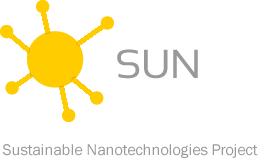Alejandro is originally from Mexico City. His main interests are promoting the sustainable and equitable development of societies and their adaptation to Climate Change. During his Bachelor he got two degrees: in Economic Theory and Mathematics and he later worked in the Mexican Central Bank for 5 years. However, his concern about the current impact that growth has on the environment and his awareness on the limitations that markets have to internalize these effects, led him to Switzerland, where he obtained a Master degree in Environmental Sciences with major in Human-Environmental Systems at ETHZ. During the time he was doing his Master Thesis, he received an invitation from Prof. Dr. Nowack to become a PhD student into the SUN Project, where he currently works in Working Package 3 improving the methods used for environmental exposure. After 3 years in SUN, Alejandro is about to defend his PhD thesis this summer (2017).
PhD Thesis Title: Environmental exposure of nanomaterials: methodological improvement and new predictions
Key Words: Environmental exposure of engineered nanomaterials, probabilistic material flow modeling
PhD Project Abstract: In recent years the production of engineered nanomaterials (ENM) has increased enormously as well as the number of applications in the market. Their novel outstanding properties vis a vis conventional materials support the belief that ENM-based applications will enhance the development of economy and society in a sustainable way. New properties of nanomaterials are associated to size-dependent effects: strength, conductivity and reactivity differ substantially from the same materials at the micro and macro scale. Among the expected contributions of ENM to human development are the creation of advanced materials for sustainable energy applications, new diagnoses tools and treatments for diseases, increased data storage capability and calculation speed of computer devices, new materials to eliminate environmental pollution, among others.
ENM are released from nano-applications to the environment during their whole life cycle. The knowledge on the effects that ENMs have on humans and the environment is still limited and uncertain. There are concerns about the consequences of released nanomaterials on environmental systems. Many authors advocate for the development and application of risks assessment methodologies during the life cycle of nanomaterials. This would contribute to reduce knowledge gaps, provide elements to issue early warnings on certain materials and applications, contribute to the development of decision tools used by industry, government and consumers, and ultimately, to protect the environment and the species living in it.
This research project intends to contribute to the environmental risk assessment field of ENM, in particular in the exposure assessment side. The main goal is to improve the current methods and use them to quantify relevant ENM mass flows to the environment. To achieve it, my project includes assessing the ENM flows within the Swiss recycling system, assessing the ENM release literature available for probabilistic material flow modeling (PMFA), assessing prospectively the ENM flows produced by the applications covered by the SUN project, and providing new estimations that incorporate the transformations of nanomaterials in material flow models.
The assessment of the Swiss recycling system showed that most of the nanomaterials entering this system will further flow into landfilling and incineration facilities, inside the material fractions less valuable and not recovered during the waste handling. Instead, just a minor fraction would flow back to the productive sector of the economy. The method developed in this part is being employed in another EU project (Nanofase) which intends to do a deeper analysis of the recycling system of European countries. The revision of the release literature used for MFA modeling showed that the coverage of ENM and release scenarios is rather low, and that it is important in this field to stablish standards that allow for an improved description of the materials released under realistic use conditions, and a bigger chance for modelers to exploit the data.
On the other side, the prospective assessment of the ENM flows allowed us to understand better the mass amounts released to the environment by the SUN applications at each point of their life cycle stage. We further assessed the impact on the total mass flows that the introduction to the market that these applications would have, by comparing them with baseline systems, which consider all the applications that currently incorporate the same ENM. The data generated in this part of the project has been used to feed the SUNDS decision tool (http://sunds.dais.unive.it/). Finally, in the last part of the PhD, for the first time we will develop a MFA model that considers the transformations of nanomaterials. So far, all the models consider mostly pristine ENM, or rather a reduced amount of transformations.
As a conclusion, the research conducted during this PhD, has contributed to improve our understanding on the amounts and state of ENM being transferred from applications to the environment, and therefore, to provide valuable information to the environmental risk assessment field. At the end of the PhD, I will have published 4 papers as main author, 2 as secondary and 2 contributions in group papers.
